There are over 700 kilometers of catacombs under the streets of Rome. With only about 2% excavated, every time you stroll on the streets of this Eternal City, you won’t know if you are walking on one. This enormous Necropolis just waits for your visit.
In the days of the Roman Empire, early Christians experienced many persecutions. Besides burial grounds for their dead, the catacombs also served as hiding places when times were hard. From the 2nd century to the 4th they were used to bury the dead. Now some of them are open to the public, and even regular masses are held in few particular catacombs. Are you ready to face the dead?
The Catacomb of Priscilla
The Catacomb of Priscilla is located under Via Salaria and is often called “Regina catacumbarum” – the Queen of the catacombs because within it was buried a great number of martyrs. This particular place is also mentioned in the earliest documents of Christian topography in Rome.
It’s taken cared by a Benedictine nun monastery, which is built on top of the entry. This catacomb was excavated 60 years ago and even though all the dead are removed, it still holds an eerie and captivating atmosphere. Another reason also makes this a good place to visit – it’s one of the less crowded catacombs of Rome.
The walls of the catacomb are made of a soft, volcanic stone. You can find the same kind of rock from Colosseum, too. All of the walls are not original, though. Some have felt the burden of time and have been amplified. On the entrance corridor there are various sized and shaped, shattered pieces of white marble, found when the place has been excavated.
The Catacomb of Priscilla is special in many ways. At least two early popes were buried in Priscilla in the 2nd century and maybe the oldest picture of Mary ever known, found in 1862, is in a little fresco down there. Besides the ancient Mary, this place holds another impressive fresco worth mentioning, the so-called “Veiled Woman.” It pictures a woman in a position that most closely resembles of the place of a priest. There weren’t any women priests known in that era. But then again, this fresco may be kept as an evidence of the fact that at the times of Emperor Constantine there actually were women priests. The Vatican has also sent their own investigators to do research on this fresco and afterwards even they have admitted that it may actually be an early picture of a woman priest.
The “Greek Chapel” is the important third place in the Catacomb of Priscilla. In the Chapel, great banquets were held for the dead. Its name comes from the Greek inscriptions in the right niche. The Chapel is a beautiful room, richly decorated with paintings in the Pompeian style. During those ancient days, death was seen as a happy incident – it was a gateway to a better place. Besides these highlights, the Catacomb of Priscilla is full of more stories, so it’s definitely worth a visit.
Walking Among the Catacomb Galleries
Christians believed that because of the resurrection of the body, you couldn’t cremate the dead. This is why Christians began to bury their dead into the catacombs. This unofficial “law” prohibiting cremation was discarded as late as in 1981 by the Pope John Paul II. In many of the galleries we walked, there were eight vertical and six horizontal “loculis” on both sides of the corridor.
There are about 13 kilometers of corridors in Priscilla altogether. Loculi is the most common type of a tomb in a catacomb, like a little hole in the wall. Sprinkles of lemon were often put into the grave with the dead, to cover the smell of decay, and the hole was clogged very carefully. Despite these precautions the smell in the catacombs in the ancient days must have been overwhelming. Modern people couldn’t bear it, I’m sure.
There are also little holes everywhere in the walls. Oil lamps were kept in these holes, to give a little light to the passers-by on the corridors. People couldn’t use torches – they would’ve consumed all the oxygen around. You could almost imagine how it has been like back then – to walk among the dead in the dim light and dancing shadows made by the thin flames of the oil lamps. Although there’s nothing scary in death, this place may have bore quite a grim atmosphere. Is it grim today? Pay a visit and decide for yourself.
The Hooded Skeletons of the Capuchin Crypt
This unusual place is beneath the church of Santa Maria della Concezione dei Cappuccini on the Via Veneto. Originally the Capuchin monks had a monastery and a graveyard outside the city walls of Rome.
In the 1600s, Barberini, a local nobleman, wanted the Capuchin monks’ land for his own villa and offered the order a new place from inside the city walls. Back in those days, it wasn’t allowed to bury people inside the city, so the monks refused because they would’ve had to leave their cemetery behind. But after awhile the pope changed the burying rule, making it possible for the Capuchin monks to move. They arrived at this particular church in 1631, bringing several boxes of bones of their deceased brothers with them.
A man called Michael of Bergamo arranged the first two chapels. His fundamental idea was that of beauty, not macabre when he made his work of art from the human bones. Unfortunately, people who have visited the crypt have often seen it as macabre. I think they’re missing the point. This place is not horrible, nor revolting.
This place just makes you confront your death, and it should make you think. It reminds you of your mortality, like the sign which one skeleton holds in his boney hands, saying: ”What you are now we used to be; what we are now you will be.” Try to see the beauty in darkness and afterwards, you can say like the Marquis de Sade said in 1775, after his visit to this crypt; “It was worth the effort.”
Capuchin monks are originally Franciscans, vowed to poverty when entering the convent, only permitted to own the robe they’re wearing and few other items. The rope holding their garment included three knots, symbolizing the father, the son and the Holy spirit.
Other permitted items were a book, sandals, and some Rosemary – which were given to a boy by his family when he entered the order. The little museum at the church houses different artifacts of the monks and some great paintings, like the famous “St. Francis in Meditation” by Caravaggio.
The crypt holds the bones of 4000 Friars with the last bones added in 1870. It includes six separate chapels, of which five are featuring a unique display made of human bones. Our guide told us that the bodies were left to decompose for 70 years. When a monk died, the oldest bones from the graveyard were excavated and added to the crypt’s collections.
Many of the skeletons are still wearing the hooded robe of the Capuchin monk – from which their name comes from; “Capucho” means hood.
There are the Crypt of the Pelvises, Crypt of the Skulls and the Crypt of the Leg and Thigh Bones, but the most impressing are the Crypt of the Three Skeletons. As the name suggests, there are three robed skeletons standing side by side with an impressive arrangement of bones around. Many of them are strongly symbolized, like a winged hourglass or a scythe. The soil of the crypt is from Gethsemane. A bit odd piece of information which strangely adds to the atmosphere.
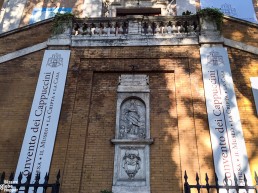
Pagan Gods Over St.Clemens Basilica
Even though not being a crypt nor a catacomb, this place held other interests. It’s a three-tiered complex of buildings. The oldest parts date back as far as being a home of an ancient, Roman nobleman, built on the foundations of a building that had probably been destroyed in the Great Fire of 64 AD. The other layers have just been built on top of the older ones, one after another. There are spots where you can see the old constructions through a glass floor.
Begin your exploration from the ground floor. There stands the most interesting part of this Basilica, the Mithraeum. It was a worshipping place for a mystery religion practiced in the Roman Empire from the 1st to the 4th century AD. The name origins from the Persian god Mithra adapted into Greek as Mithras and linked to some new, distinctive imagery in Rome. The Cult of Mithraism had a complex system of seven levels of initiation and the worshippers always met in underground caves like the one preserved below the Basilica St.Clemens. What happened to the Cult of Mithraism early in the 4th century AD has stayed a bit of a mystery. Descriptions are few from that period, and there is no evidence found that the cult would’ve still existed in the 5th century.
However, the Mithraeum is not the only remnant of Paganism in this Christian church. For example, there’s an altarpiece with some pagan symbolism carved on it, but if you turn it around, there are Christian ones on the other side. This was just economic re-usage of resources, not a clever way to distract, though. When ascending from the ground floor, you’ll move through the layers of time and see how the construction changes – and the pagan symbols turn into Christian ones. Unfortunately, the place loses interest at the same speed. There are some very remarkable frescos on the top floor, but having always been more interested in the ancient Paganism than the Christianity, I appreciated the origins more. Christians have destroyed too many places valuable for cultural history by building their sanctuaries on top of the original pagan ones. It always adds up to my depreciation.
The most interesting place of these three sites was the Catacomb of Priscilla. Special thanks also go to our guide, Joseph, whose way of telling detailed stories kept our interest alert. Even though we’re not the type of travelers who enjoy guided tours, it sometimes just pays the effort to take one. You can hear great details on the way, which you otherwise would miss.
Bizarre Fact
There's one fun legend told in Rome about the Cappucino coffee. It's said to be invented in a café right next to the church of the Capuchin monks. It was done for some foreigners who insisted on having milk in their coffee. The owner put some frothed milk on top of the coffee, which reminded him of the hair style of the Capuchin monks – a ring of hair on an otherwise bald head. Inspired by this, he decided to call the new coffee "Cappuccino." This story is probably not true, but it's nevertheless a fun story.
*Disclaimer: We were hosted by Walks of Italy on a walking tour of the Roman catacombs and crypts, but all opinions and views are entirely our own.
You May Also Like to Read:
Best Things To Do in Cartagena, Spain: From Quirky Sights to Roman Ruins and the Best View
Dance with the dead in a medieval funeral crypt, feel the glory of the Roman Empire, and crown the day with a sweeping view from the castillo.
The Christmas Market of Tallinn’s Old Town
Feel the spirit of the Middle Ages at the Rathaus Square in Tallinn, filled with the tiny cottages selling everything from handicrafts to mulled wine.
Best Christmas Markets in Copenhagen and Christmas Things to Do
Wander through Copenhagen’s Christmas markets, marvel Tivoli in its Christmas gown and sip Danish winter brews to catch the spirit of Yule.
Valencia’s Old Town Merges Famous Sights With Street Art
Narrow alleys of El Carmen host a weird mix: subcultures and street art, orange gardens, old mansions, and the most iconic sights of the city.


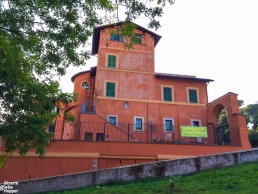
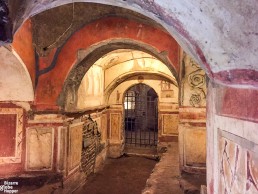
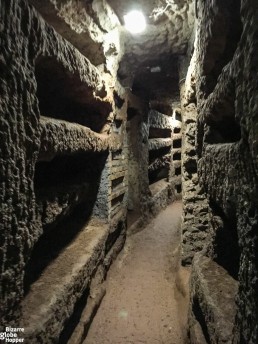
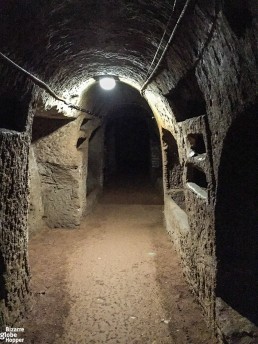
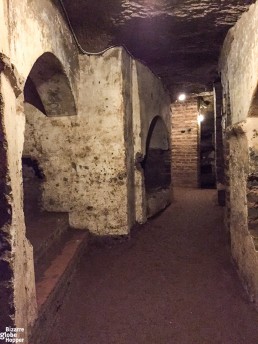
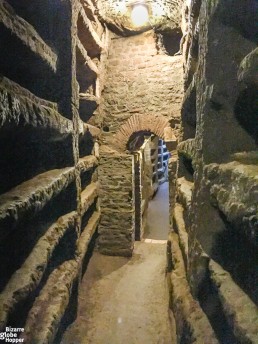
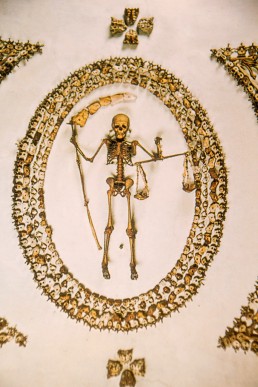
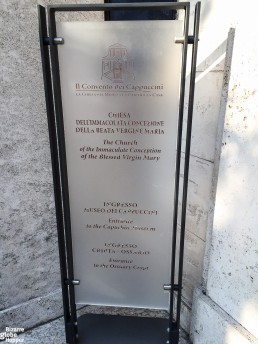
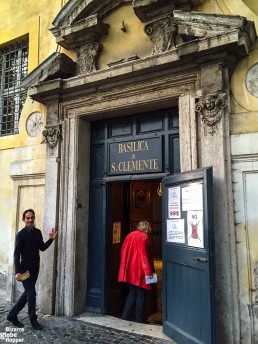
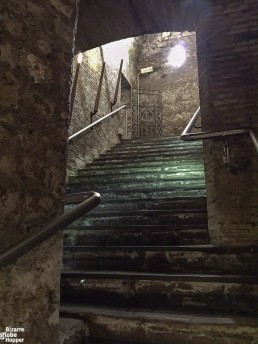
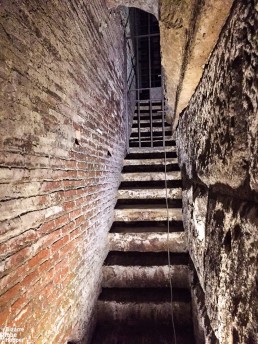
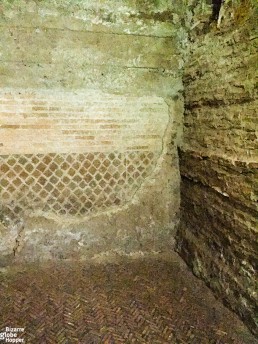
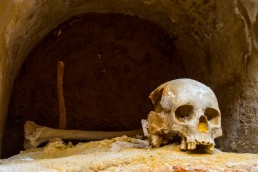
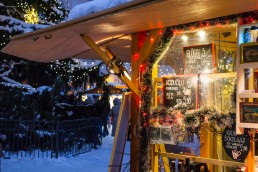
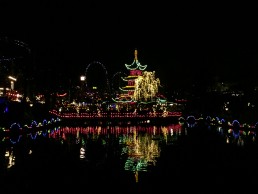
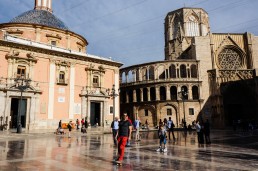
I’ve been on this tour with Walks of Italy a couple of years ago and thoroughly enjoyed it. Fascinating places with an excellent guide. My only disappointment was that you couldn’t photograph the Capuchin Crypt . I agree with you, I found the experience moving rather than sad or macabre.
Hi, Kathryn. Yes, this place was truly fascinating. It was a disappointment that you couldn’t take photographs inside the Capuchin crypt, but then again I understand it in the principle of respecting the dead.